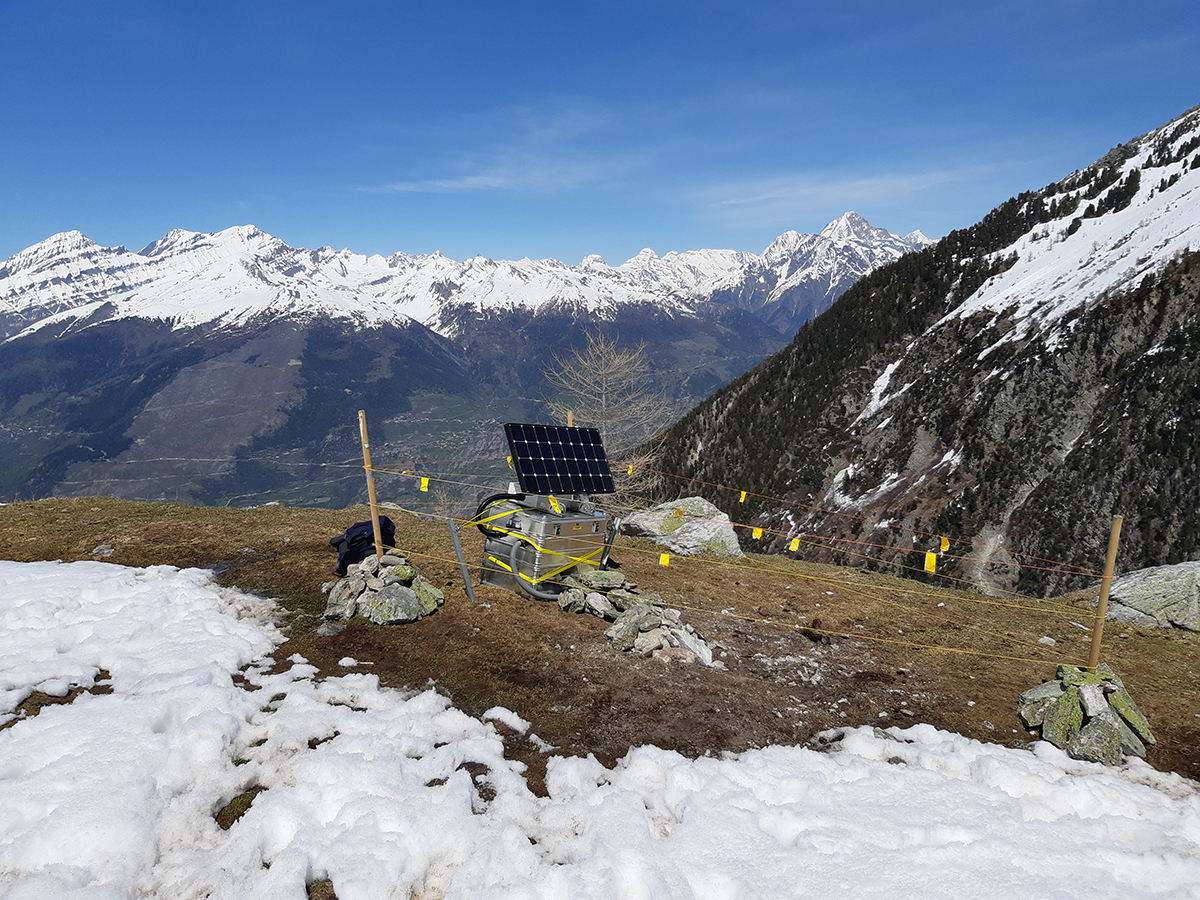2019-06-05
Using seismometers to monitor rapid mass movements
Above the village of Susten in the Canton of Valais, a stream is carving its way through a fascinating geological formation called 'the Illgraben'. Rock masses, both large and small, are constantly coming loose and falling away from the steep slopes of the gorge. Several times a year, mostly after precipitation, this creates a mushy mixture of sliding rocks, mud and water. These mudslides also rip out large blocks of limestone and quartzite and move down the valley at high speed as far as the River Rotten. Usually, no damage is caused near the Illgraben. In other places, in extreme cases mudslides move millions of cubic metres of rock distances of several kilometres. If these mudslides hit transport routes or human settlements, as happened in 2017 with the debris flow at Pizzo Cengalo, for example, the effects can be devastating. Sophisticated measuring systems can help to gain a better understanding of, or even predict, such processes. Researchers from the Swiss Seismological Service (SED), ETH Zurich's Laboratory of Hydraulics, Hydrology and Glaciology (VAW) and the Swiss Federal Institute for Forest, Snow and Landscape Research (WSL) are investigating this at the Illgraben site.
Read more...Predicting large mass movements is no easy matter. Indications of a potentially threatening event are hard to measure, the underlying physical processes are poorly understood and the affected areas can often only be accessed with difficulty. In remote alpine valleys, it is already quite a challenge to ascertain whether an event has even taken place because the spatiotemporal coverage offered by existing monitoring methods (e.g. satellites or geodetic instruments) is insufficient. Local seismic measurement networks offer a hitherto little-used alternative. Mudslides, rockfalls or rock avalanches trigger ground motion. Depending on the size of events, seismic stations can detect the associated movements from several kilometres away and in rare cases even up to several thousand kilometres away. Locally condensing the seismic network and ensuring fast data transmission can improve the monitoring of vulnerable areas and possibly warn of dangerous mass movements. Since 2017, for research purposes the SED has been running such a network including additional measuring instruments in the Illgraben. The knowledge gained from this should help to monitor and predict mass movements better and more reliably in the future.
Further information: Prof. Dr. Fabian Walter at VAW at ETH Zurich.
